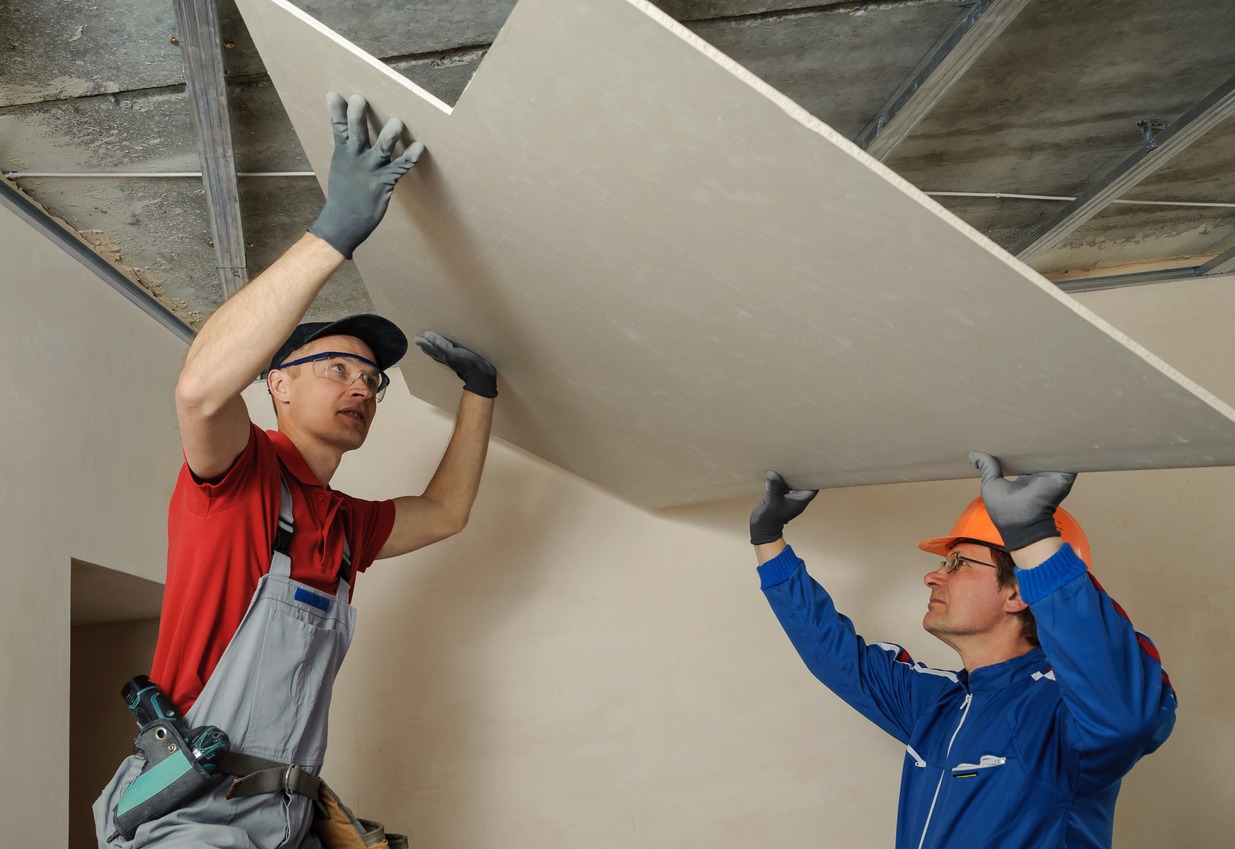When people renovate their homes they have many different options and lots of things to learn. That’s why they read ultimate guides to plastering a ceiling or read about different kinds of walls. In the latter scenario, many people install drywall because it’s popular and relatively inexpensive.
If you’re currently considering the drywall option, there are a few things you should know before you proceed. In this article, we’ll discuss the pros and cons of this material so you can make the best decision for your home. But before going into the details, you may also want to check out the next link to know the best and most affordable faltbarer wäschekorb you can buy online. Aside from its quality, it is also easy to find a company that provides professional drywall repair service just in case you need one.
What Is Drywall?
Drywall is a construction material used to finish the interior walls of homes and buildings. It’s made from panels of gypsum plaster sandwiched between two layers of heavy paper or fiberglass matting.
Drywall is hung on studs or joists using screws or nails, then the seams are taped and covered with joint compound to give a smooth, finished surface. Joint compound can be applied with a trowel or by hand. It dries quickly so that you can sand it down and paint over it within a day or two. Keep your ceiling messy and dust free use powerful vacuum.
The Different Texture Choices
Here are several common examples of textures for drywall: orange peel, knockdown, hand-troweled, and sand swirl. The internet can fill you in on the alternative drywall texture types, including rosebud, Santa Fe, lace and Venetian plaster. You can also read related articles discussing drywall nails, and obtain free quotes from local professionals.
Each texture has a different look, so you’ll want to take this into account before choosing. The application methods also vary, and some textures can be more difficult to apply than others. If you’re unsure which one to choose or how to apply it, consult with a professional drywall company. The technique is similar to creating a knockdown texture.
The Preparation Process
First, you need to make sure that the studs or joists in your walls are evenly spaced and in good condition. If they’re not, you may need to add additional supports before proceeding. Second, you’ll need to decide what thickness of drywall you want to use. The most common thicknesses are ½ inch and ¾ inch, but there are also speciality boards available in thicknesses ranging from ⅛ inch to two inches. If you want to have this ceiling texture in your home, it’s better to hire a professional, to prevent creating a mess on your floor as well.
You’ll also need to choose between paper-faced and fiberglass-faced drywall panels. Paper-faced panels are the most common type and are covered with a thin layer of paper that helps to prevent the joint compounds from seeping through. Fiberglass-faced panels are more expensive but offer better resistance to fire, mold, and moisture. Once you’ve selected your materials, you’ll need to gather some tools before beginning the installation process. You’ll need a screw gun or drill, drywall screws or nails, a hammer, a tape measure, a level, joint compound, and drywall tape. If you’re using paper-faced panels, you’ll also need an air compressor and stapler.
Heat, Moisture And Sound
Heat
If you live in an area with high temperatures, you need to take extra care when installing drywall. The heat can cause it to warp and buckle, which will lead to an unsightly finish. Make sure that you use screws instead of nails to secure the drywall, and use a heavier gauge of paper tape. You may also want to consider using a product like DensArmor Plus, which is designed for high-heat environments.
Moisture
If your home is prone to dampness or humidity, you need to ensure that the drywall is properly sealed and protected from moisture. There are special types of drywall that are designed for high-moisture environments, so ask your local home improvement store for advice. After all, you don’t want to end up with moldy drywall!
Sound
If you live in a noisy area, you might want to consider using soundproof drywall. This type of drywall is thicker and heavier than regular drywall, and it contains special materials that help to reduce noise. It’s a bit more expensive than regular drywall, but it can make a big difference to your home’s sound quality.
The Advantages And Disadvantages Of Drywall
Here are some key advantages to using this material:
- Drywall is extremely versatile. You can use it for walls, ceilings, and even floors
- Drywall is very easy to install. You don’t need any special skills or tools to get the job done.
- Drywall is very affordable, so it’s a great option if you’re on a budget.
- Drywall is fire resistant. This is a great safety feature, especially if you live in an area that’s prone to wildfires.
- Drywall is termite
- Drywall is soundproof. This can be a great advantage if you have young children who need to sleep.
Here are some disadvantages of drywall:
- Drywall can be very heavy
- Drywall is not as strong as some other materials.
- Drywall can be damaged easily.
- Drywall is susceptible to mold and mildew.
- Drywall can be damaged by water.
- Drywall isn’t eco-friendly.
- Drywall is difficult to repair.
Some Practical Applications
Here are some scenarios where drywall is a great choice:
- You want to install a new backsplash in your kitchen but don’t want to go through the hassle of tiling.
- You’re looking for an inexpensive way to cover up some water damage in your bathroom.
- You need to quickly divide up a large room
- You want to create a soundproof barrier
- You’re trying to achieve a certain look for your space
Using Concrete Walls As An Alternative
Concrete walls are strong, durable and able to withstand high winds and severe weather conditions. Concrete walls also have a high fire rating, so they won’t catch fire as easily as drywall. They’re unfortunately difficult to repair if they become damaged. Additionally, concrete walls are very difficult to install. If you’re not experienced in construction, it’s best to hire a professional to do the job for you.
At the end of the day, it’s important to do some more research and speak to professional drywall contractors. They can make sure you choose wisely and end up with the best possible results. Then your walls will serve you for the maximum time possible, and will achieve all that you desire. Make sure you hire Artista Drywall; they’re the leading experts that can transform your property with premium drywall.
How to Stop Cracks
Hiring a qualified and experienced drywall contractor is the best way to reduce any potential risks of cracking. Only a smooth installation process can ensure that your drywall is perfect from start, minimizing any cracks that can appear. Look for a contractor that has the qualifications to do drywall patching, stellar track record, awards and positive reviews when hiring them. Its important to consider the mudding drywall as well.
There could be many reasons why your drywall might start to crack. By being aware of the most common causes, you can take steps to prevent them and minimize any damage that may occur. If you experience a drywall crack, be sure to address it quickly so that the problem doesn’t worsen.
Drywall is a construction material that is used to build walls and ceilings, as well as other design features like arches, eaves, and other architectural features. It provides smooth surfaces for walls and ceilings, and can also add fire and sound resistance.

